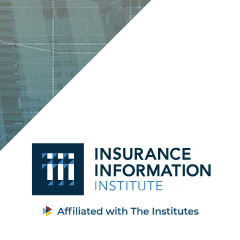By Kris Maccini, Social Media Director, Triple-I
For Black History Month, Triple-I is putting the spotlight on Black entrepreneurs and innovative leaders in insurance. Innovation and leadership are two words that come to mind when you meet Roosevelt Giles, chairman, Atlanta Life Financial Group, as much as his humble beginnings speaks to his resilience and fortitude.

Giles is the son of Bo and Lake Giles, two sharecroppers who lived in servitude to a plantation owner in South Carolina until the 1960s. He describes life during these times as “legalized slavery” and says that he picked cotton throughout much of his early childhood. “I only went to school when it rained,” he says. “If it was sunny, I was in the fields.”
Giles says that his family left sharecropping when his older sister paid off their $11K debt [to the plantation owner] and bought the family a home. This freedom allowed Giles to pursue higher education and led him into business as a tech founder and investor. In fact, it was Giles’ technology background that brought him into insurance when he was asked to transform the over 100-year-old company into the digital era.
Atlanta Life has proven to be an attractive opportunity for Giles. The company was founded by Alonzo Franklin Herndon, a former slave with only three-months of formal education. Herndon was emancipated in the late 1800s and went from selling goods on the side of the road to real estate and eventually insurance. He made many investments in infrastructure – housing and education – over the years, believing that Atlanta Life was successful only when the community was successful. In 1950, Herndon and his son Norris created the Herndon Foundation and named the people within the community as shareholders. The company has been credited with funding the Civil Rights Movement and became the primary source of life insurance policies for Black people during that era, most notably insuring the life of Dr. Martin Luther King, Jr. Atlanta Life and the Herndons were recognized and honored with the Nobel Laureate Foundation in 2018.
Giles feels a kinship with Herndon and his desire to provide comfort and dignity to the Black community. “When I was growing up, we’d sell fish fries on Friday or Saturday nights to make enough money to bury someone. Alonzo went into insurance because he wanted to take care of the people most at risk,” Giles says.
According to Giles, Atlanta Life has been invested in “stakeholder capitalism” since the onset. He credits the company with being one of the first to support women on the Board and in the C-suite as far back as the 1920s.
Recently, Giles has made another move towards improving racial equity by creating the Herndon Directors Institute (HDI), a 6-month program that trains underrepresented individuals – women and people of color – to be “board-ready”. The program launched earlier this month with fellows receiving mentorship from an impressive list of global corporate leaders.
“Capitalism is making it happen. Capitalism started this problem, and capitalism needs to fix this problem,” Giles says.
He just may be right. Several top companies have implemented commitments to racial equity, including NASDAQ who requires board diversity on any listed company and Goldman Sachs, who won’t take a company public without it.
While programs like HDI will be a huge step in ending generational poverty, Giles recognizes that his industry still has a long way to go. “The insurance industry needs to be more inclusive. We need to build products that address the wealth deficits in communities of color. The way to end generational poverty and build wealth is through financial literacy.”
“As the only Black Insurance carrier in the U.S., Atlanta Life is positioned to do just that. The brand is trusted in Black and underserved communities, and there is no other company, owned by a foundation, that is positioned to invest hundreds of millions of dollars into the Black and people of color communities on an annual basis,” Giles says. “So, when companies partner with Atlanta Life, we can eliminate generational poverty.”







